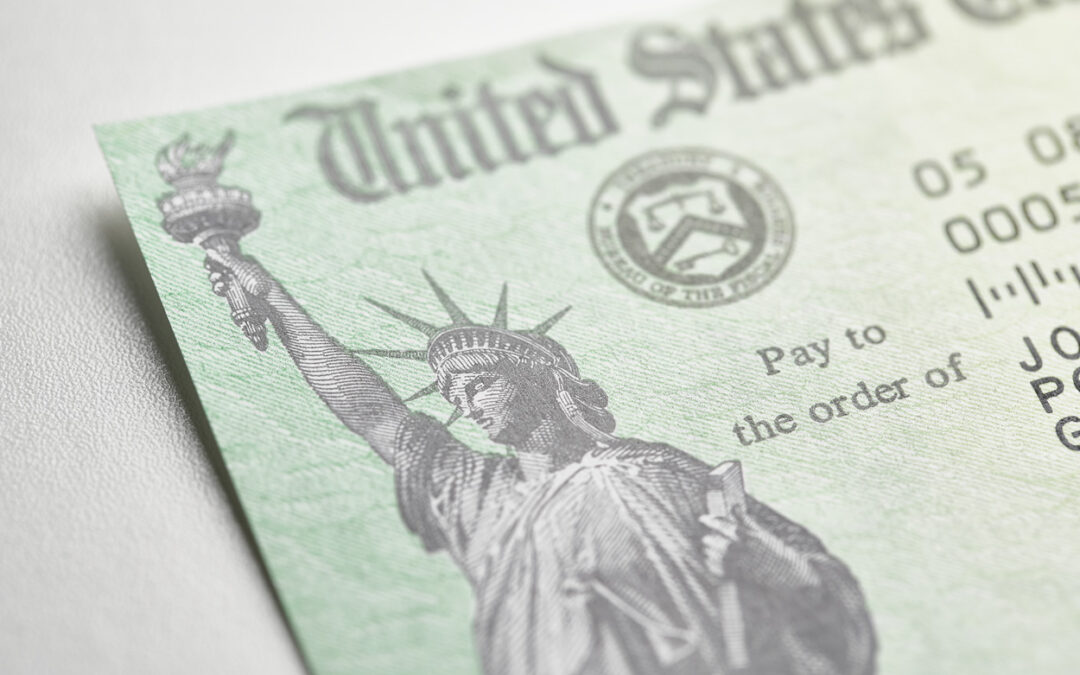
by sreamercpa | Dec 28, 2021 | child-tax-payments
IRS issues information letters to Advance Child Tax Credit recipients and recipients of the third round of Economic Impact Payments; taxpayers should hold onto letters to help the 2022 Filing Season experience
The Internal Revenue Service announced on 12-22-2021 that it will issue information letters to Advance Child Tax Credit recipients starting in December and to recipients of the third round of the Economic Impact Payments at the end of January. Using this information when preparing a tax return can reduce errors and delays in processing.
The IRS urged people receiving these letters to make sure they hold onto them to assist them in preparing their 2021 federal tax returns in 2022.
Watch for advance Child Tax Credit letter
To help taxpayers reconcile and receive all of the Child Tax Credits to which they are entitled, the IRS will send Letter 6419, 2021 advance CTC, starting late December, 2021 and continuing into January. The letter will include the total amount of advance Child Tax Credit payments taxpayers received in 2021 and the number of qualifying children used to calculate the advance payments. People should keep this and any other IRS letters about advance Child Tax Credit payments with their tax records.
Families who received advance payments will need to file a 2021 tax return and compare the advance Child Tax Credit payments they received in 2021 with the amount of the Child Tax Credit they can properly claim on their 2021 tax return.
The letter contains important information that can make preparing their tax returns easier. People who received the advance CTC payments can also check the amount of their payments by using the CTC Update Portal available on IRS.gov.
Eligible families who did not receive any advance Child Tax Credit payments can claim the full amount of the Child Tax Credit on their 2021 federal tax return, filed in 2022. This includes families who don’t normally need to file a tax return.
Economic Impact Payment letter can help with the Recovery Rebate Credit
The IRS will begin issuing Letter 6475, Your Third Economic Impact Payment, to EIP recipients in late January. This letter will help Economic Impact Payment recipients determine if they are entitled to and should claim the Recovery Rebate Credit on their tax year 2021 tax returns that they file in 2022.
Letter 6475 only applies to the third round of Economic Impact Payments that was issued starting in March 2021 and continued through December 2021. The third round of Economic Impact Payments, including the “plus-up” payments, were advance payments of the 2021 Recovery Rebate Credit that would be claimed on a 2021 tax return. Plus-up payments were additional payments the IRS sent to people who received a third Economic Impact Payment based on a 2019 tax return or information received from SSA, RRB or VA; or to people who may be eligible for a larger amount based on their 2020 tax return.
Most eligible people already received the payments. However, people who are missing stimulus payments should review the information to determine their eligibility and whether they need to claim a Recovery Rebate Credit for tax year 2020 or 2021.
Like the advance CTC letter, the Economic Impact Payment letters include important information that can help people quickly and accurately file their tax return.
More information about the Advance Child Tax Credit, Economic Impact Payments and other COVID-19-related tax relief may be found at IRS.gov.
As the 2022 tax filing season approaches, the IRS urges people to make sure an accurate tax return and use electronic filing with direct deposit to avoid delays.

by sreamercpa | Aug 16, 2021 | child-tax-payments
If you didn’t get your August advance child tax credit in your bank account today, you’re not alone. Due to “an issue,” a percentage—less than 15%—of folks who got their payment by direct deposit in July will be mailed paper checks for the August payment, according to an Internal Revenue Service news release. Another way to put it: More than 4 million families will have to wait for a paper check. That could be at the end of August. “For those receiving their payments by paper check, be sure to allow extra time for delivery by mail through the end of August,” the IRS says.
The first batch of advance monthly payments sent out in July worth roughly $15 billion reached about 35 million families. About 86% (30 million families) got their July payments by direct deposit. That would work out to 4.5 million folks stuck waiting for their August payments. The IRS says it expects to have a fix before September, so for those affected, September payments will resume by direct deposit.
Most families will see the August direct deposit payments in their accounts starting today, August 13. Subsequent payment dates are: September 15, October 15, November 15 and December 15.
Normally you get the Child Tax Credit when you file your tax return (you’d get the 2021 credit in the spring of 2022 when you file your 2021 tax return). But the American Rescue Act both increased the tax credit dollar amount and included a provision to make half of the credit available as advance payments on a monthly basis starting July 15—for 2021.
The expanded credit provides parents with a $3,000 credit ($250/month) for every child age 6 to 17, and $3,600 ($300/month) for every child under age 6 (that’s up from $2,000 per dependent child up to age 16). Individuals earning up to $75,000 a year, heads of household up to $112,500 a year, and joint filers up to $150,000 a year are eligible to receive the full amount of the enhanced credit. The credit is nonrefundable, meaning you don’t need income to receive it (normally to take advantage of a tax credit you need income that it would offset). Earn too much to get the enhanced credit? The advance payments apply to the basic $2,000/year child tax credit, too. That phases out at $440,000 of income for a couple.
Didn’t get a July payment? Families who did not get a July payment and are getting their first monthly payment in August will still receive their total advance payment for the year. This means that the total payment will be spread over five months, rather than six, making each monthly payment larger.
Some families will get two August payments. In another fix, the IRS is correcting an issue regarding payments for families where the parent(s) have an Individual Taxpayer Identification Number and the qualifying children have a Social Security number. For these families who didn’t not get a July payment, they should get a monthly payment in August, which includes a portion of the missed July payment. They should get the remainder of the July payment in late August.
Keep in mind—the advance child tax credit is an advance, meaning you could get a smaller refund or owe more when you file your 2021 taxes next spring. To decline advance payments or to update your bank account information, go directly to the IRS Child Tax Credit Update Portal or access it from the IRS’ Advanced Child Tax Credit Payments In 2021 page.

by sreamercpa | Jul 12, 2021 | child-tax-payments, IRS
The first monthly payments of the expanded and newly-advanceable Child Tax Credit from the American Rescue Plan will be made starting July 15. Most families will begin receiving monthly payments without any additional action. Eligible families will receive a payment of up to $300 per month for each child under age 6, and up to $250 per month for each child ages 6 to 17.
People who don’t need to file a 2020 federal tax return can also use the Non-filer Sign-up Tool to register to receive the advance CTC payments, the Third Round Economic Impact Payment, and the Recovery Rebate Credit.
The IRS encourages people to request payments via direct deposit, which is faster and more secure than other payment methods. People who don’t have a bank account should visit the Federal Deposit Insurance Corporation website for details on opening an account online. They can also use the FDIC’s BankFind tool to locate an FDIC-insured bank.
People can check their eligibility for the AdvCTC payments by using the new Advance Child Tax Credit Eligibility Assistant.
This link will also taxpayers to opt out of receiving the advanced tax credit if they prefer to receive the entire credit at one time when they file their 2021 federal income tax return. However, you must create a separate account for both the taxpayer and spouse since the IRS requires both parents in a two-parent household to unenroll separately.
It is too late to opt out of the July 15 payment, but you can opt out of all subsequent payments if you sign up now.
Finally, like the 2020 stimulus payments, this is an advance against the actual credit that will be calculated when taxpayers prepare their 2021 tax returns. So taxpayers must keep track of all advance payments received to prevent delays in the IRS processing their 2021 tax refunds.



